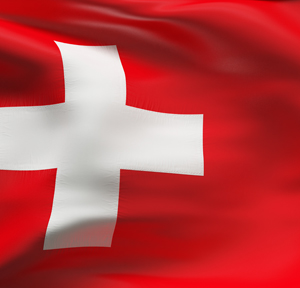Client Affairs
Negative Rates Cause Swiss Bank Clients More Pain

The largest Swiss bank has extended its fees on large accounts to deal with the pain of negative official interest rates.
The pain caused to Switzerland-based banks from negative official
rates, in place for more than four years, has come under the
spotlight again with the country’s biggest lender extending
fees.
UBS said conditions in
money and capital markets remained “very challenging”. The
Zurich-based firm said that following “similar moves by a number
of other banks here in Switzerland”, it is adjusting cash deposit
fees for Swiss Francs held in Switzerland.
A spokesperson for UBS stressed that the changes only apply to the Swiss banking business.
From 1 November, private individuals holding large cash balances
of SFr2.0 million with UBS Switzerland will be charged a deposit
fee of 75 basis points, or 0.75 per cent. (The Swiss National
Bank sets interest rates at a negative 0.75 per cent.) For
clients holding large euro cash balances with UBS Switzerland AG,
the threshold will be cut to €500,000 as of November, from €1
million, which it said is “in line with competitors”. Holdings
above the threshold will be charged a deposit fee of 0.60 per
cent per annum.
“Interest rates are lower than expected, remaining in negative
territory. We assume that this period of low interest rates will
last even longer and that banks will continue to have to pay
negative interest rates on customer deposits at central banks,”
UBS said.
Other banks
Julius Baer told this publication that negative interest rates
for clients are “introduced on a case-by-case basis for certain
currencies” (Swiss franc, euro, Danish Krone and Swedish krona).
Clients with large cash holdings are affected. Credit Suisse said
that it will introduce a -0.4 per cent rate for the first time on
1 September for its clients with balance of €1.0 million; it has
not previously had a negative rate for private clients with euro
accounts.
“Our relationship managers are in regular contact with clients
holding large cash positions, in order to discuss suitable
investment proposals as alternatives. The bank will continue to
monitor developments,” a spokesperson at Julius Baer said.
The reason why
The Swiss National Bank, which put official rates into official
negative territory in early 2015, has defended the policy as a
way to weaken the Swiss franc, which has been boosted by its
status as a safe-haven currency. In 2014, the SNB stunned markets
by abandoning its Swiss franc cap against the euro of 1.2, a move
that is said to have wiped out several hedge funds. One
consequence of the change is that UBS, which earns the majority
of its revenues outside the Alpine state,
now reports its figures in dollars, rather than the Swiss
franc. (So far, other major Swiss banks still report in the local
currency.)
Another result of negative official rates (a policy also in
places such as Denmark and Japan) has been to encourage some
merger and acquisition activity in Switzerland, compressing the
number of banks. According to the Swiss Bankers Association,
there are 253 banks in the country, down from more than 300 a
decade ago.
EY, aka Ernst & Young, has studied the pressures caused by the
Swiss central bank’s policy. (See
here.)